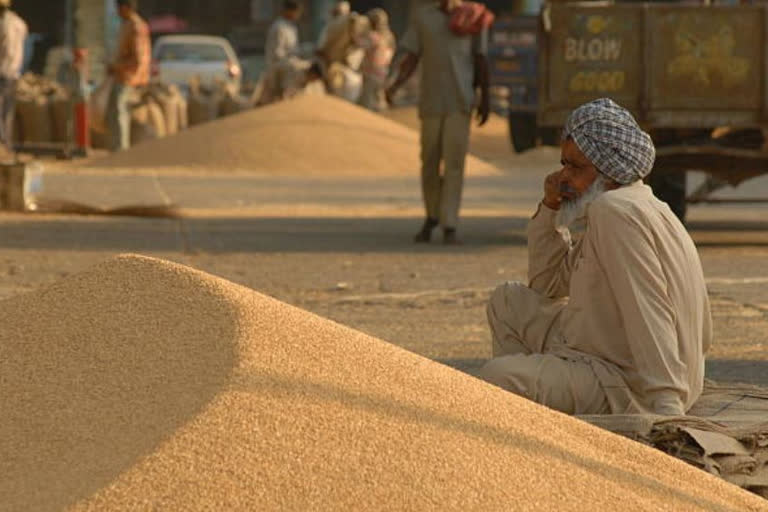Hyderabad: The granaries are full. There is a huge buffer stock and all data indicates that India is on the brink of a good Rabi crop harvest. Yet, the COVID-19 pandemic and the related lockdown is bound to have its dark shadows on the whole food grain scenario of the country.
The effect might not be felt immediately, but the gradual convergence of decline in demand and supply due to Coronavirus will eventually hit the Indian granaries brimming up with record production, a MS Swaminathan Foundation report said.
Read more:PM should be bold in declaring economic package of 5-6% of GDP: Congress
The Centre had earlier indicated that total food grain production in India was estimated at a record 291.95 million tonnes (Second Advance Estimates for 2019-20), which was 6.74 million tonnes higher than 2018-19.
But, this so far hunky-dory picture suddenly got smudged due to the virus outbreak. While the nation is forced to follow ‘break the chain’ to maintain social distancing, economists worry about the far reaching consequences of the disturbed demand and supply chain, this harvest season. A momentary surge and then a decline in both supply and demand is bound to send shocks down the local supply chain, they say.
From the field to the plate
The harvest season for Rabi crops starts from April and involves a tight schedule with a series of procedures - from harvesting to selling the produce. Harvesting of Rabi crops is immediately followed by sowing of Kharif seeds in May. Both the harvesting and sowing season are equally labour intensive and any lapse reflects on the final yield.
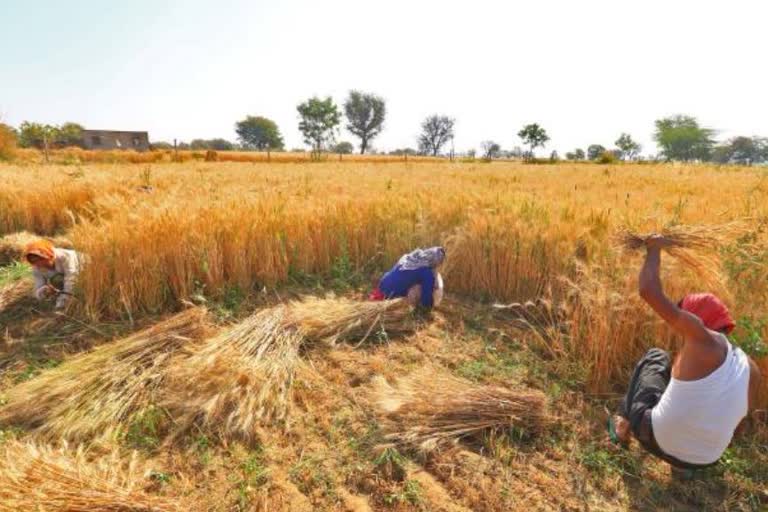
The cutting of crops is done early in the morning so that the produce can be sent for the wholesale markets or Mandis on the same day. Private traders or government agents collect the produce and bring them to the Mandis. The extremely hot cruel Indian summer dehydrates fruits and vegetable fast. In the wholesale markets, the price of any produce depends on how fresh it is. From the wholesale market the produce is then sent for both exports and retail, eventually ending with the customer.
In all these above procedures a huge number of labourers who are skilled, semi-skilled and unskilled, are intensely involved. At every node of the supply chain, they are the ones who form the backbone.
How the chain is broken
This chain is now badly disrupted because of COVID-19.
Demand for labour work is usually high this time of the year because of the harvest season. But, the lockdown and eventual displacement of migrant labourers have created a huge vacuum of available labour in rural India. Apart from the unorganised sector, many of those who packed the buses in Delhi or had started their arduous journey back home from Maharashtra, Gujarat or from the southern states, worked as farm labourers. The crop is there on the fields ready to be harvested, but due to the want of adequate labourers, things could go bad in no time.
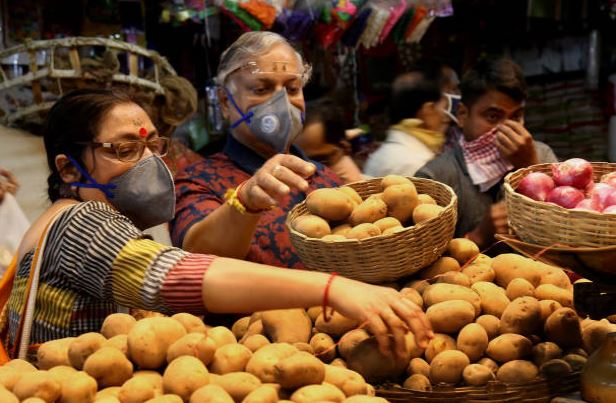
Then comes the workforce engaged in the Mandis or the wholesale markets. Due to the Coronavirus scare, most of the Mandis are operating only twice and three times in a week adding to the woes of the already suffering farmers, mainly those who produce fruits and vegetables.
Another crucial link which keeps the chain fastened, is transportation and farm equipment repairing workshops. Though goods trains are exempted from the lockdown, yet blockades in movement of agricultural commodities across major highways, have already resulted in huge spoilage and wastage of fruits and vegetables.
Supply bottlenecks have resulted in a slide in farm prices of a wide range of produce including food crops, cash crops, horticulture and plantation crops.
Farm mechanised equipment needs frequent repairing and maintenance. Workshops catering to these needs are shut, leading to breakdowns and delay in harvest.
All these add to the already brewing trouble pot.
Scenario in the states
Food and cash crops have been badly affected in Maharashtra, one of the worst hit states of India due to COVID-19. Tomatoes, grapes and strawberry farmers have already incurred huge loss because of labour shortage and unavailability of transportation to wholesale markets.
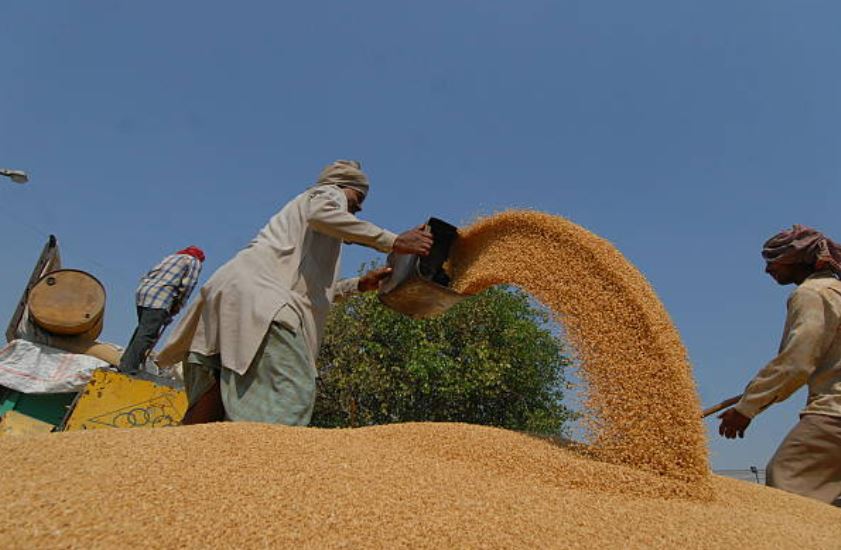
In Punjab, farmers growing vegetables have incurred losses owing to lockdown.
In Madhya Pradesh, and other wheat producing states, the Centre had asked for delayed cutting, which posed another problem. Untimely rains and stray animals have harmed standing crop
Over 1,000 tonnes of grapes in Bengaluru rural and Chikkaballapura districts of Karnataka, are ripe for harvest. But, lack of labourers, proper transportation has made life tough for the farmers. These districts along with Kolar and Ramnagar are big centres for sericulture. The silk nest prices have gone down from Rs 400 to Rs 150 since the COVID-19 outbreak, as closed markets have led to decline in silk demand.
Lack of transportation amid the lockdown has prevented Bydagi chilli farmers in Bellari and Raichur from reaching the local markets. Banana and ginger cutting have also been delayed. This year, corn production has been good across 15 districts of Karnataka, but decline in demand has put farmers at risk of incurring huge losses.
Lack of storage
Lack of warehousing and storage has been a perennial issue in India. Though the Centre has taken some initiatives, things are yet to be streamlined.
“At least 11 per cent of annual produce is wasted due to lack of proper storage. COVID-19 has only aggravated the situation,” says Dr Parashmram Sagar Patil, consultant, Agriculture and Processed Food Products Export Development Authority (APEDA).
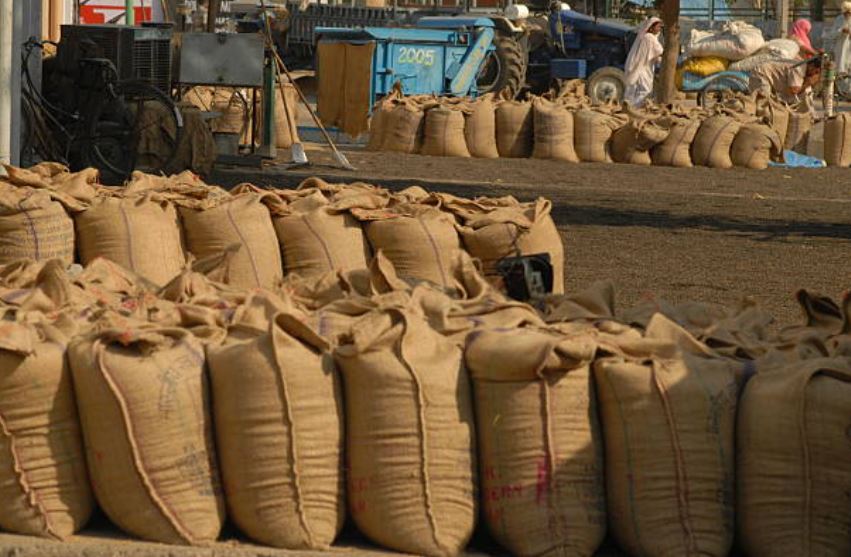
With storage capacity full of buffer stock, a good harvest this year coupled with strained demands, farmers to vendors as well as small to medium businesses linked to the agri-sector are only waiting for the worst to come.
“With perishable produce like potato, onion and tomatoes and seasonal fruits and vegetables, lack of proper storage will be a huge problem. This will lead to a double whammy where farm price will go down and market price will be high,” Patil added.
Dwindling demands and the fallout
As overseas markets grapple with COVID-19 for at least the next six months with low consumer demand and port hurdles, there is nothing to rejoice in the domestic market.
The tea, meat, seafood and spices exports to the USA, Europe and China are going to be heavily impacted due to the COVID-19 related economic slump. Farm gate prices for export oriented commodities such as spices, mango, grapes etc. are crashing and will impact future crop availability. The demand contraction in the international markets coupled with dwindling domestic demands will have its negative impact on the country’s agri-economy.
“The government has correctly issued lockdown guidelines that exempt farm operations and supply chains. But, implementation problems leading to labour shortages and falling prices should be rectified,” said S Mahendra Dev, Vice Chancellor, Indira Gandhi Institute of Development Research, Mumbai.
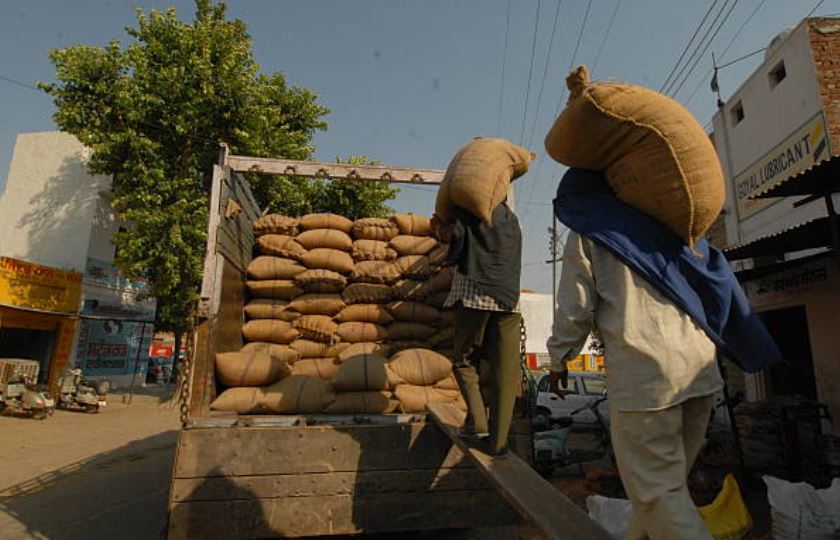
The MS Swaminathan Foundation report further states, as lockdown goes ahead, prices are expected to rise, but farmers are unlikely to be the beneficiaries. Most of the benefits are expected to flow to wholesale, retail traders and middlemen.
Even with full granaries, unless the supply chain is streamlined, insulating the rural food production sector and making food available to every plate in India is going to be a big challenge.
(ETV Bharat Report)
